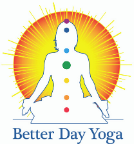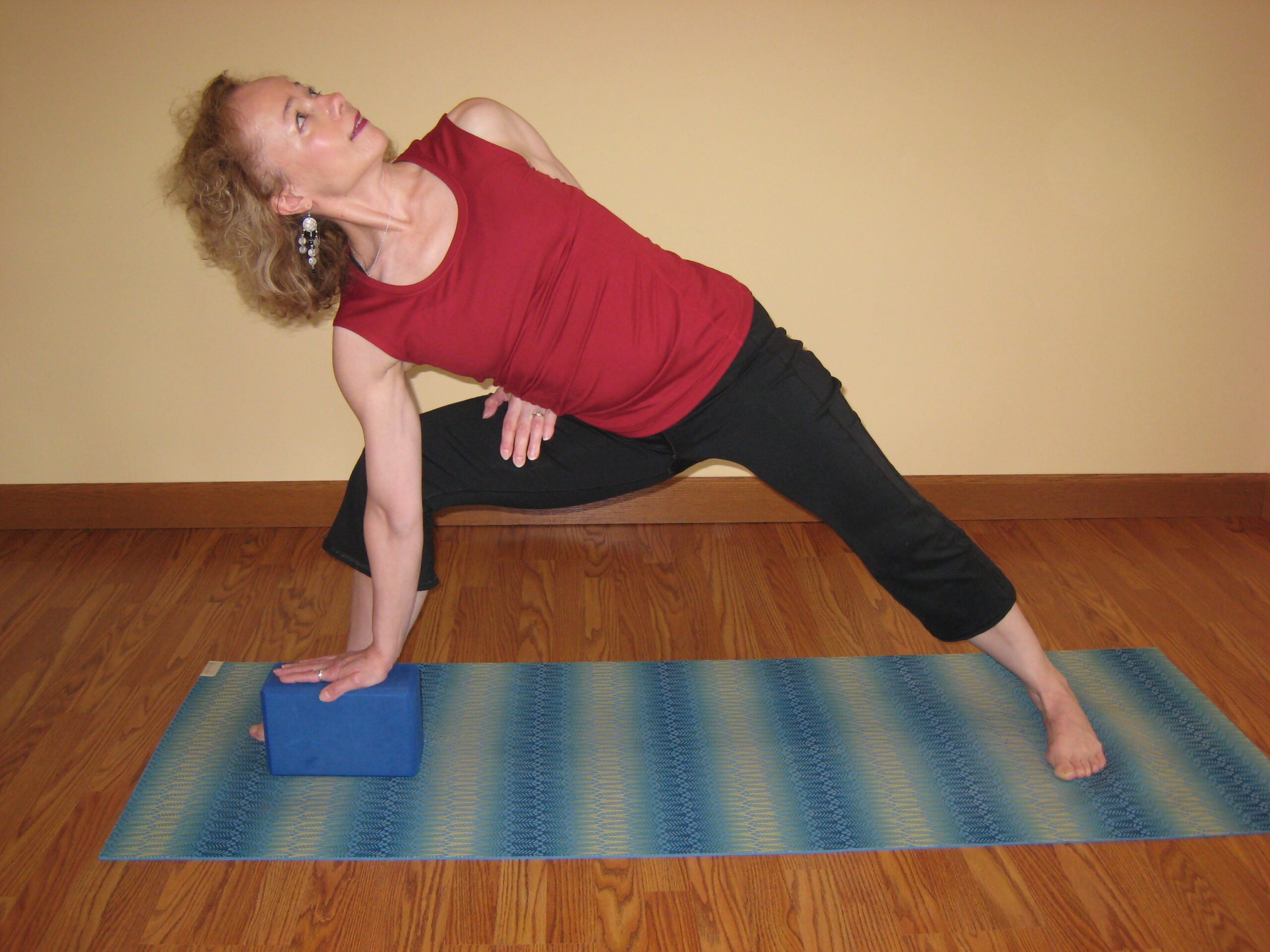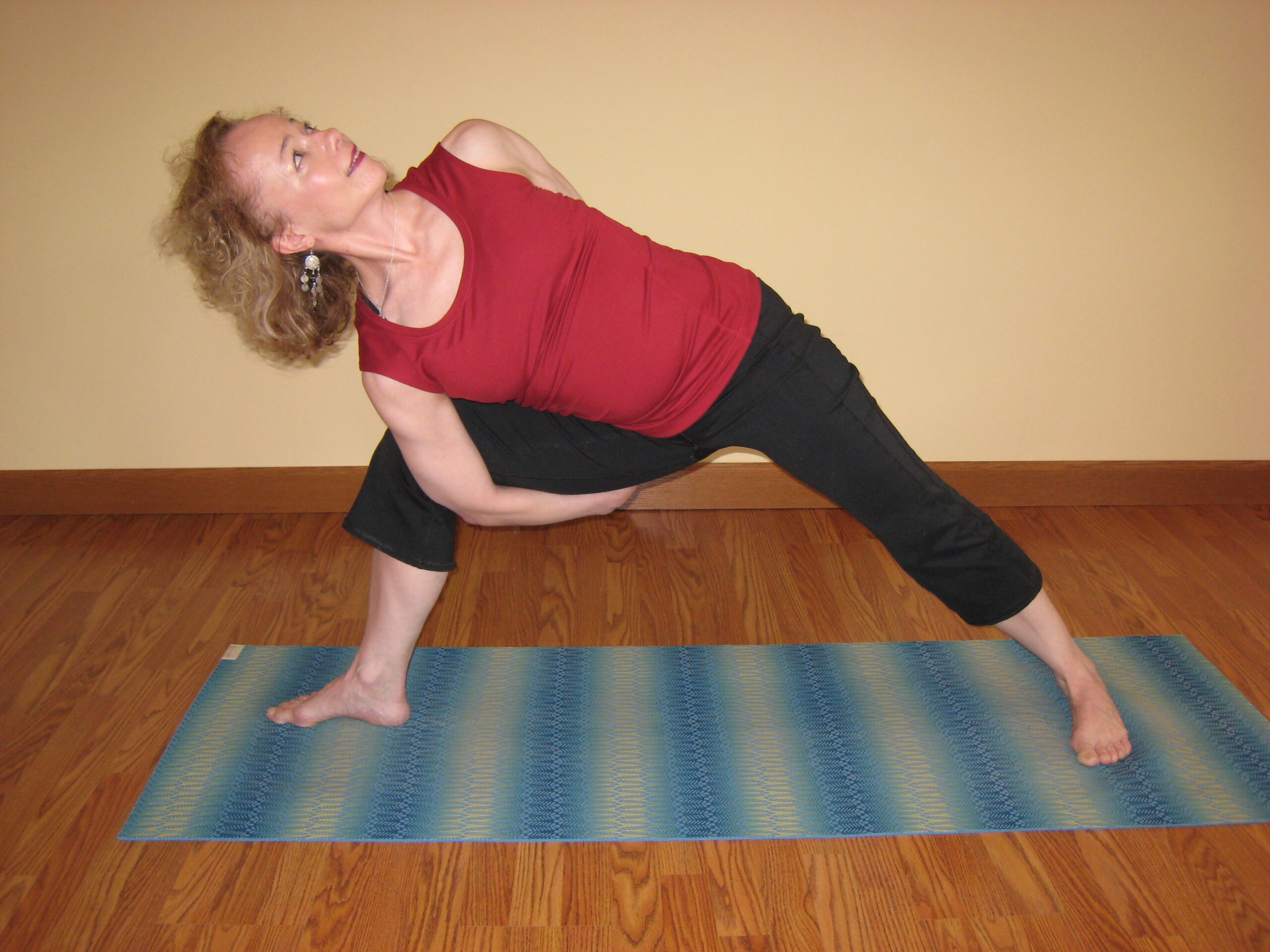
Side Angle (Sanskrit Term: Utthita Parsvakonasana)
Benefits:
- Strengthens: Ankles, Quads, Obliques, Hip Flexors, Hip Abductors, Shoulders
- Stretches: Hip Adductors, Calves, Ankles, Spine, Waist, Shoulders, Chest and Lungs
- Increases Stamina
- Improves posture
- Enhances lung capacity (B.K.S. Iyengar)
- Beneficial for Sciatica and low backache as well as constipation
- Stimulates the sacral chakra, our creativity / sensuality center
- Stimulates the abdominal organs
Alignment Cues: Starting from Warrior II, bend your front knee and stack it over the ankle. Bring your front arm to rest on the front thigh, bending the elbow and your palm facing up “to receive” (spiritually receive from the Universe). Your back arm is now the top arm and reaches for the sky, palm facing forward and arm in line with shoulder. Keep your back foot anchored into the outer edges of the foot. Lift your ribs off the thigh. Anchor the legs to the ground. Keep the back knee solid with a slight bend to it to protect the knee. Elongate your neck and “keep it happy”, as I often say in class. The classic version suggests looking up at the arm but you can also look forward or down (not shown). Rotate your chest open to the sky.
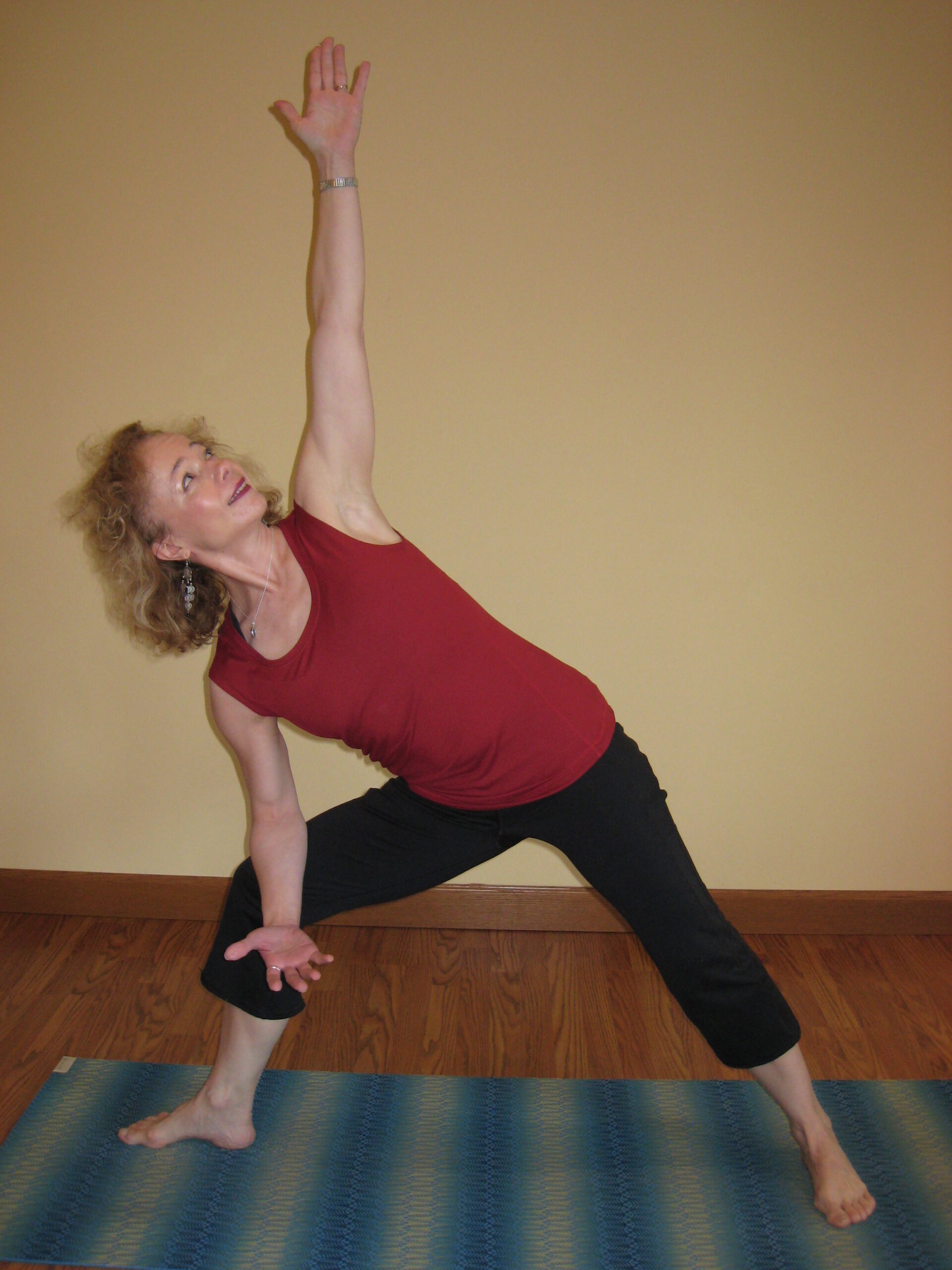
Advanced versions:
Extended Side Angle: Lower your top arm over your ear, palm down reaching through your fingertips and pushing into your back foot.
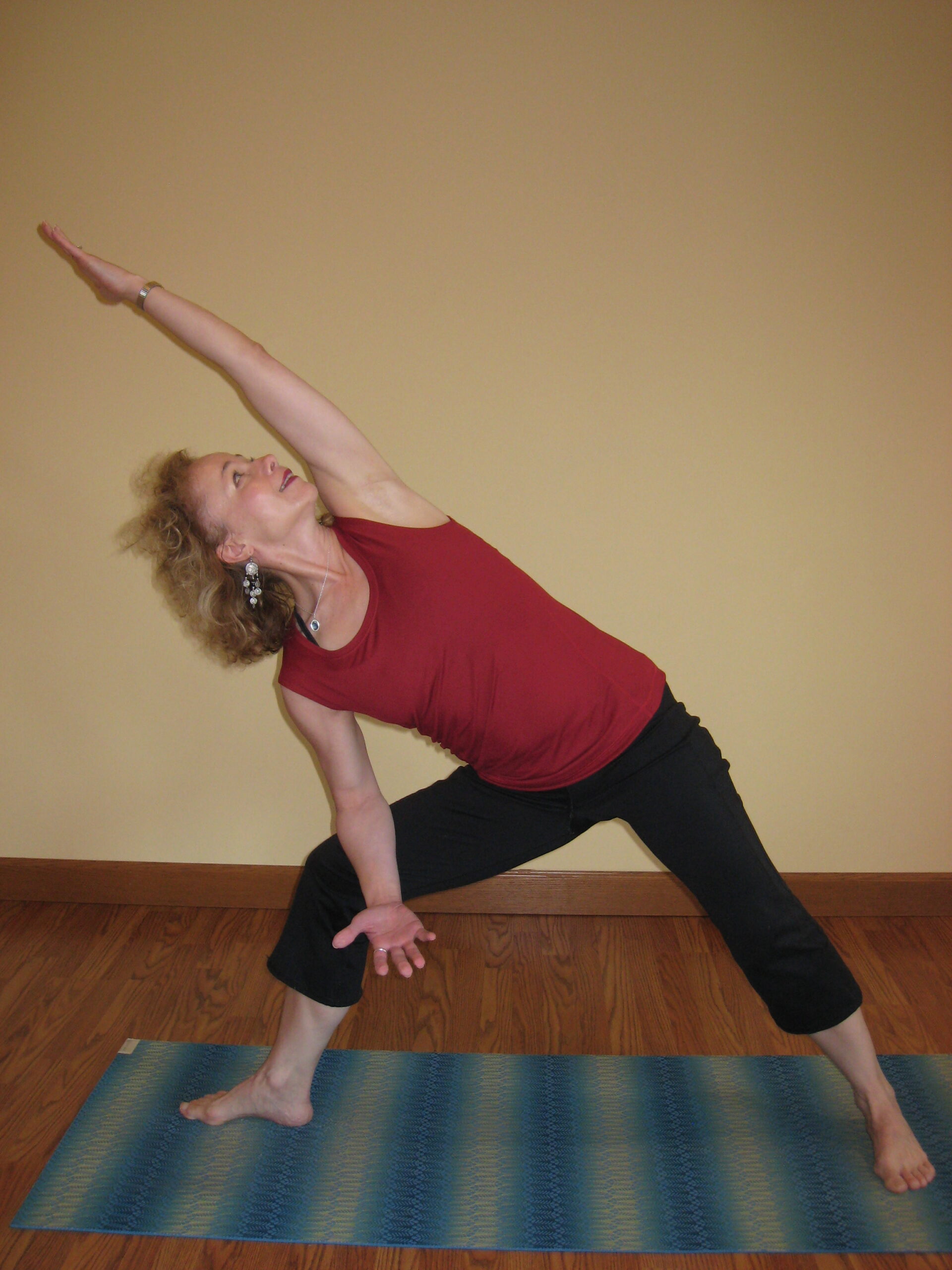 “The diagonal line created by the arm, torso, and leg symbolizes our connection from Earth to heaven and heaven to Earth.” 30 Essential Yoga Poses For Beginning Students and Their Teachers, Judith Lasater, PhD, P.T.
“The diagonal line created by the arm, torso, and leg symbolizes our connection from Earth to heaven and heaven to Earth.” 30 Essential Yoga Poses For Beginning Students and Their Teachers, Judith Lasater, PhD, P.T.
Hand to floor or block: Place your lowered hand on the floor or block outside of the front foot. Press hand/fingertips into the floor or block. Extend the torso, lengthening your ribs along the bent leg.
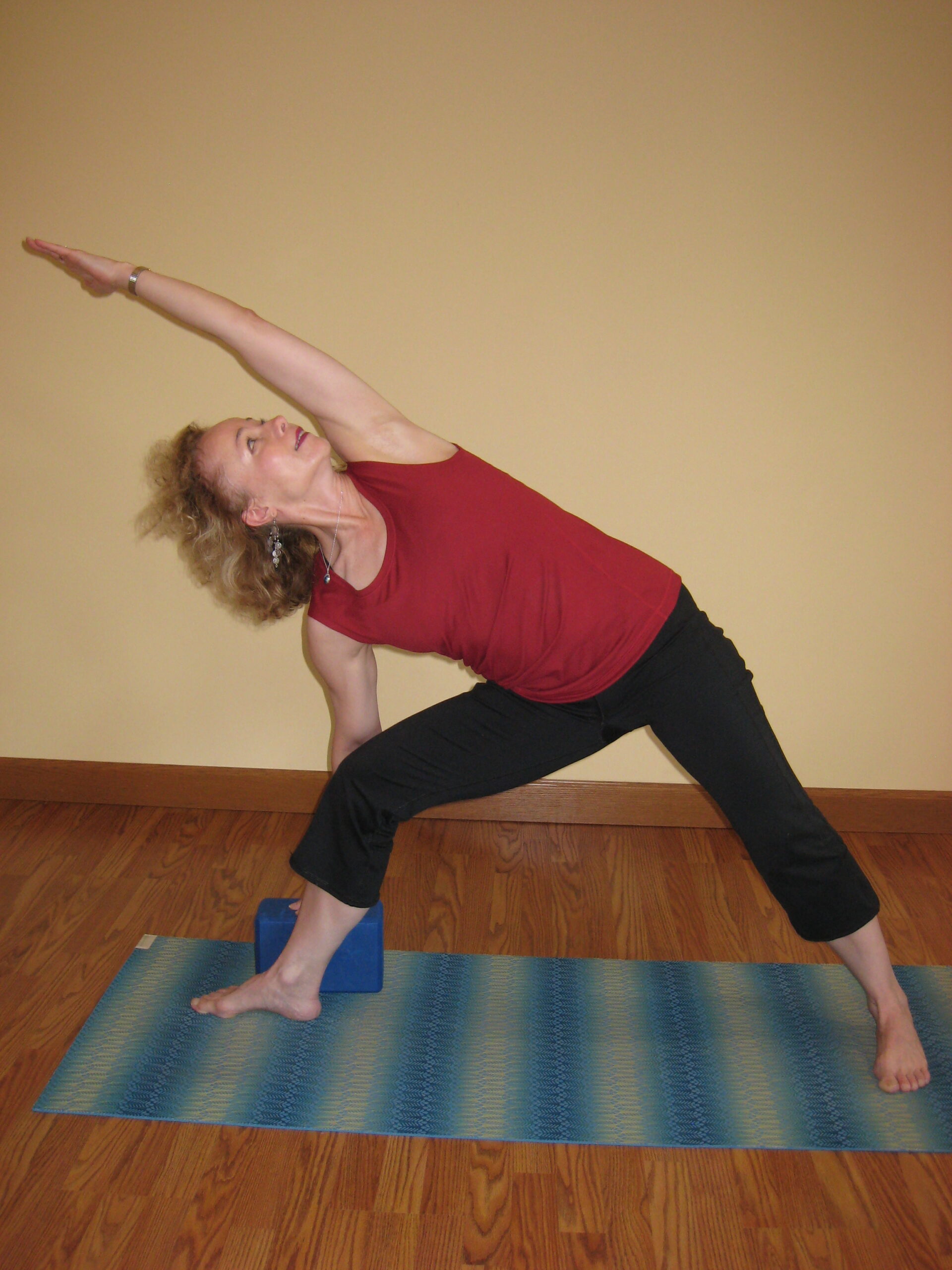
You can also place the lower hand on the inside of the front foot—this adds a stretch to the front groin. Bring the back of the lowered shoulder against the inner knee to add to the stretch.
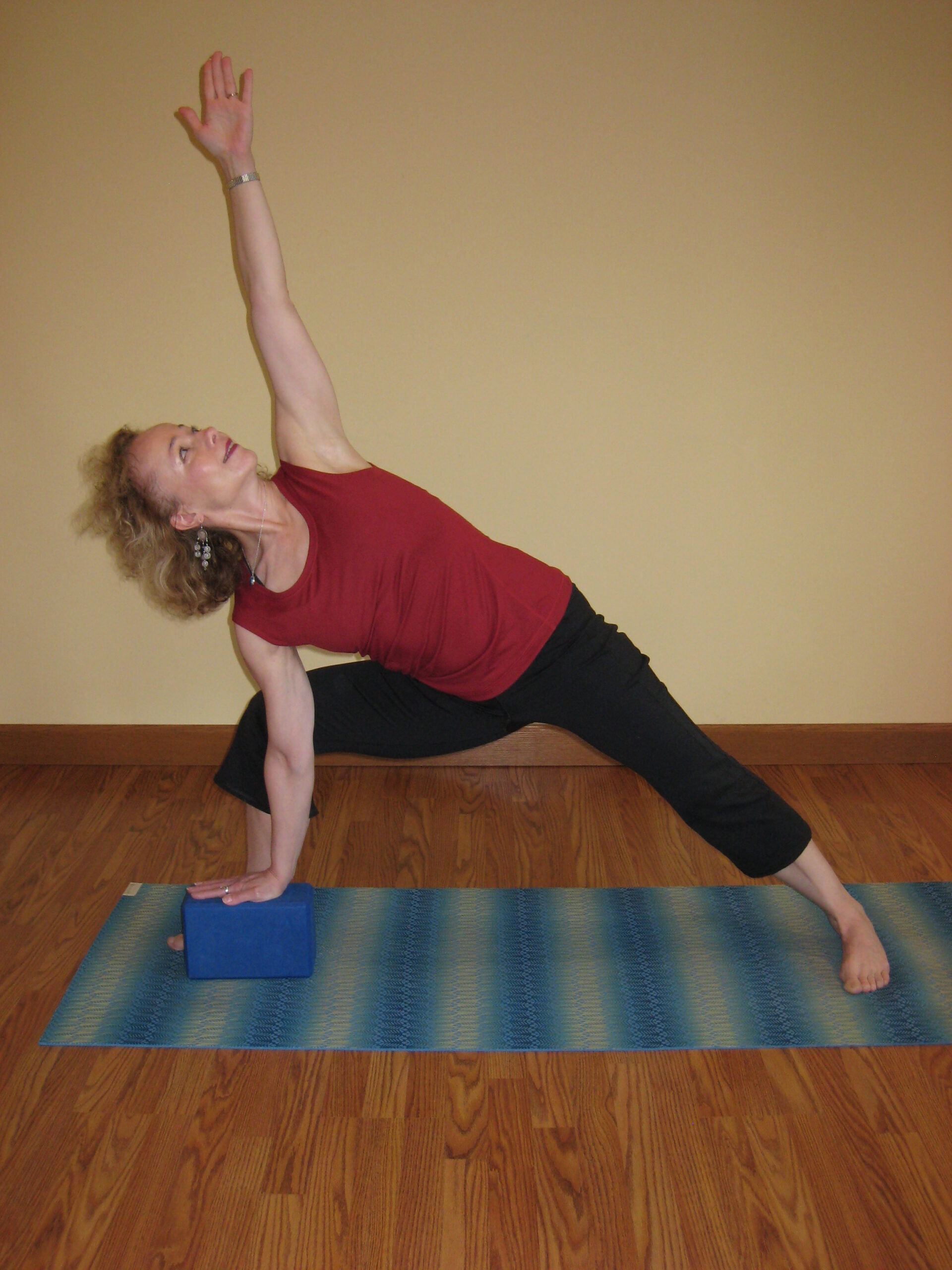
Do the hand to the floor or block option only if it is in your pain-free range of motion. There’s nothing special about the floor. So don’t go there because your ego tells you that it’s “better”. Let your body tell you what feels good. I like to remind my students that more is not necessarily better. Shorter stances or not getting your hand to the floor in this pose can mean a better quality pose for your body.
Advanced option to add a bind: This adds heat to the pose, more strength through the quads and waist, and openness through your chest and shoulders. Because you can no longer rely on your bottom arm to prop you up, support must come from within so this increases intensity.
- Half a bind: Wrap the top hand around the back, fingernails toward the back (resting on the back if you need to) reaching toward the front thigh if you can. Roll chest to the sky adding a slight twist as you look over your top shoulder if your neck allows.

Once you can rest the palm down on the front thigh and further down the inside of the front leg, try a full bind:
- Full bind: Bring your forward hand inside your front foot. Reach behind your back with your top hand as you reach beneath the forward leg with your bottom hand, clasping them together. Lean back. Sink hips into the floor. Roll chest to the sky adding a slight twist as you look over your top shoulder if your neck allows.

Beginner’s tip: Still unsure on your form or new to yoga? You can try a practice pose.
Add a Prop: Practice with your back to the wall for added support (not shown). The wall support reduces fatigue, helps you hold the pose longer, and aligns your neck and head correctly. The wall also helps correct misalignment of the shoulders and should blades. (B.K.S. Iyengar Yoga The Path To Holistic Health.)
Neck concerns? Don’t turn your head to look at arm. Look forward or down (not shown). In fact, B.K.S. Iyengar recommends those with hypertension do the pose with the wall for support, and look down at the floor. (B.K.S. Iyengar Yoga The Path To Holistic Health.)
Lifted back foot? Use the wall to ground the back heel (not shown).
Shoulder range of motion concerns? Put the top hand on the hip.
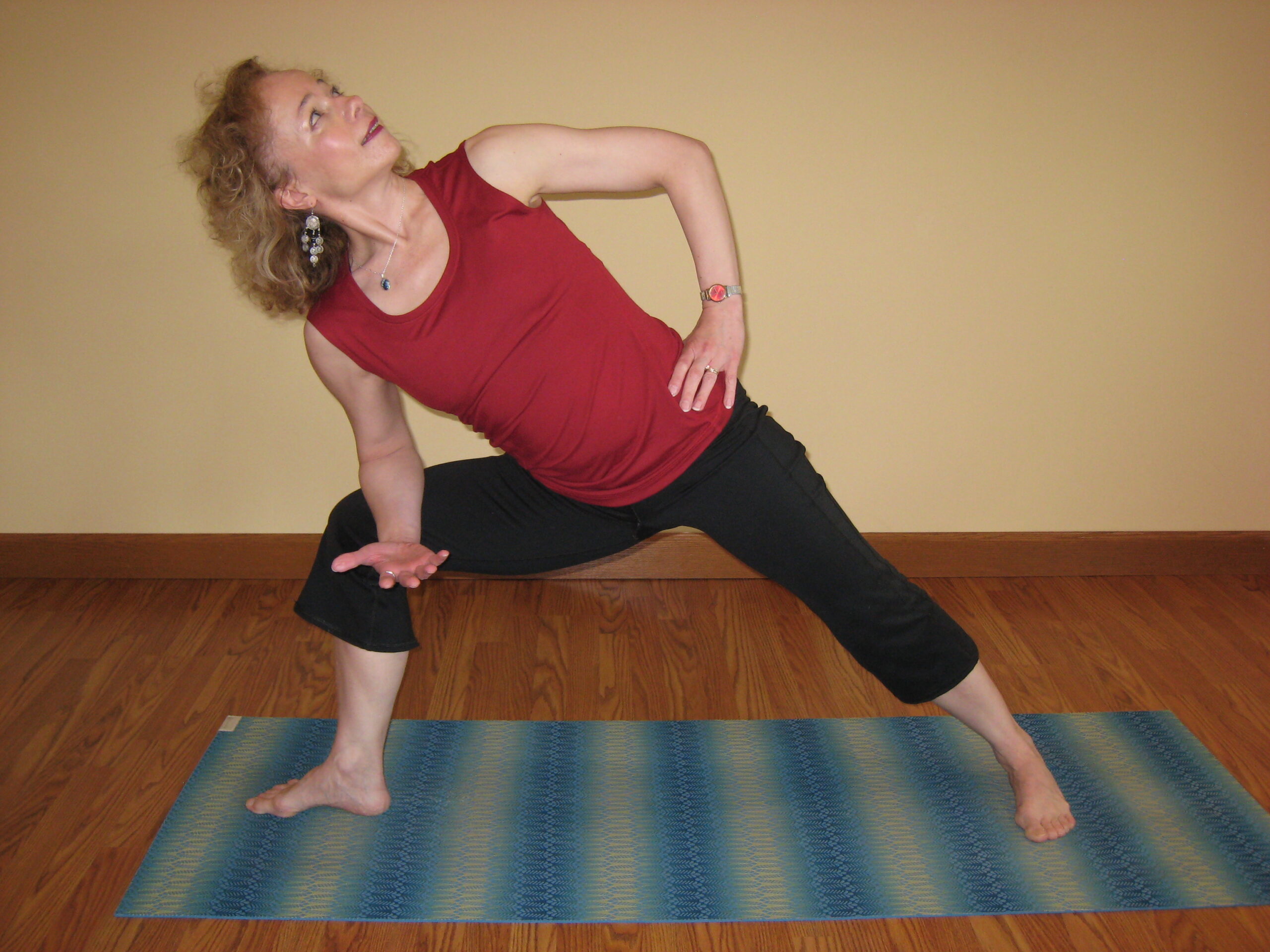

Contraindicated for:
- High or low blood pressure
- If you have cervical spondylosis, don’t turn your head or look up.
- Stress-related headaches
- Migraines
- Osteoarthritis of the knees
- Insomnia
Sources: YogaJournal.com, B.K.S. Iyengar Yoga The Path to Holistic Health, Beth Saw’s YogaFIt®, and Yoga to the Rescue Remedies for Real Girls by Amy Luwis.
